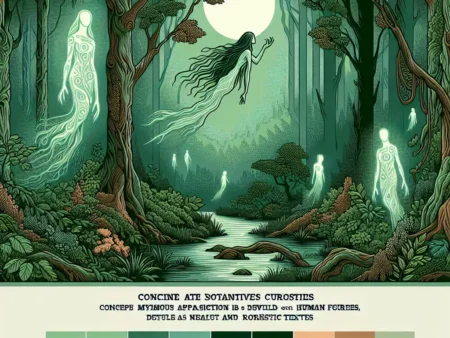Mengungkap cerita-cerita tersembunyi di balik mitos-mitos tentang hantu yang telah terlupakan.
Menggali Cerita di Balik Mitos: Hantu yang Terlupakan
-
Table of Contents
Menggali Cerita di Balik Mitos: Hantu yang Terlupakan

Introduction
Indonesia is a country rich in cultural heritage and folklore. One aspect of this heritage is the belief in supernatural beings, including ghosts or “hantu” in Indonesian. These hantu are often depicted in myths and legends, passed down through generations. While some hantu have gained popularity and become well-known, there are many others that have been forgotten over time. In this article, we will explore some of these forgotten hantu and the stories behind them.
The Origins of Hantu Beliefs in Indonesia
Hantu beliefs in Indonesia can be traced back to ancient animistic beliefs that were prevalent in the archipelago before the arrival of Hinduism, Buddhism, and Islam. These animistic beliefs recognized the existence of spirits in nature and the supernatural realm. Over time, these beliefs merged with the religious practices brought by foreign influences, resulting in a unique blend of spirituality in Indonesia.
Indonesia’s diverse cultural landscape has also contributed to the development of various hantu beliefs. Different regions have their own unique hantu, each with its own characteristics and stories. These hantu often reflect the local culture, environment, and historical events.
The Forgotten Hantu
Pontianak
The pontianak is one of the most well-known hantu in Indonesian folklore. It is often depicted as a female ghost with long hair and a white dress. However, there are other hantu that have been overshadowed by the popularity of the pontianak.
One such hantu is the kuntilanak, which is similar to the pontianak but with a few distinct differences. The kuntilanak is said to be the spirit of a woman who died during childbirth. It is believed to have a more vengeful nature compared to the pontianak. The kuntilanak is often associated with the sound of a baby crying, which is used to lure its victims.
Tuyul
The tuyul is another forgotten hantu that deserves attention. It is often depicted as a small, mischievous creature with a bald head and glowing red eyes. The tuyul is believed to be a spirit that can be summoned and controlled by a person for their own benefit.
In some regions, the tuyul is considered a guardian spirit that protects its owner’s wealth. However, it is important to note that the tuyul can also be dangerous if not properly controlled. It is said that the tuyul can bring misfortune to its owner if it is mistreated or neglected.
Kuntilanak
While the pontianak and kuntilanak are often used interchangeably, there are subtle differences between the two. The kuntilanak is believed to be the spirit of a woman who died during childbirth, while the pontianak is the spirit of a woman who died while pregnant. The pontianak is said to be more aggressive and vengeful compared to the kuntilanak.
Both the pontianak and kuntilanak are often associated with trees, particularly the banyan tree. It is believed that these hantu reside in the tree and can transform into a beautiful woman to lure their victims. The sound of a baby crying is often associated with their presence.
Preserving Hantu Stories
As modernization and globalization continue to shape Indonesia, traditional beliefs and folklore are at risk of being forgotten. It is important to preserve these stories and pass them down to future generations. By doing so, we can ensure that the rich cultural heritage of Indonesia is not lost.
One way to preserve hantu stories is through oral traditions. Elders can share their knowledge and experiences with the younger generation, keeping the stories alive. Additionally, efforts can be made to document these stories in written form, ensuring that they are accessible to a wider audience.
Furthermore, cultural festivals and events can be organized to celebrate hantu folklore. These events can include storytelling sessions, performances, and exhibitions that showcase the different hantu and their stories. By creating a platform for hantu folklore, we can generate interest and appreciation for these forgotten hantu.
Conclusion
Hantu beliefs in Indonesia are deeply rooted in the country’s cultural heritage. While some hantu have gained popularity and become well-known, there are many others that have been forgotten over time. These forgotten hantu, such as the kuntilanak and tuyul, have their own unique stories and characteristics.
Preserving hantu stories is crucial to maintaining Indonesia’s rich cultural heritage. Through oral traditions, written documentation, and cultural events, we can ensure that these stories are passed down to future generations. By doing so, we can keep the spirit of hantu alive and continue to appreciate the diverse folklore of Indonesia.







